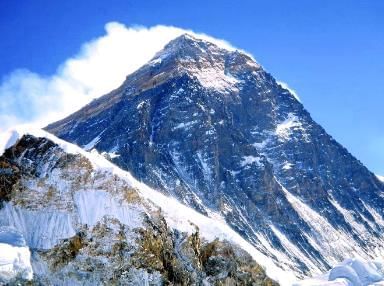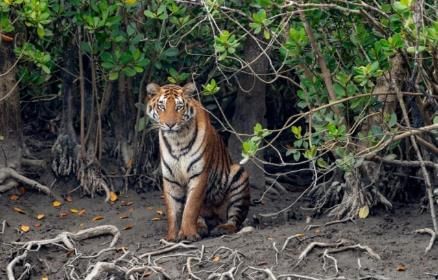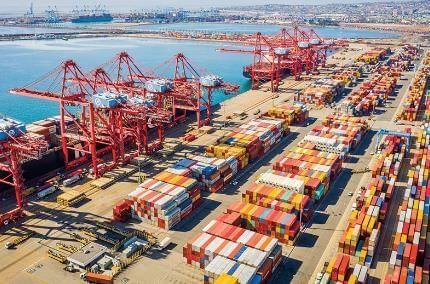Year 6 Exam > Year 6 Notes > Geography for Year 6 > The Geography of Asia
The Geography of Asia | Geography for Year 6 PDF Download
| Table of contents |

|
| Where is Asia? |

|
| Physical Geography |

|
| The Sundarbans |

|
| Human Geography |

|
Where is Asia?
- Asia, the largest continent on Earth, encompasses over forty countries, including some of the world’s most populous and expansive nations, such as China and India.
- It is primarily located in the Northern Hemisphere, with its northern regions extending into the Arctic Circle and its southern areas crossed by the Tropic of Cancer.
- Asia is bordered by the Arctic Ocean to the north, the Pacific Ocean to the east, and the Indian Ocean to the south.
Physical Geography
Features
- The Himalayan mountain range, formed by the collision of the Indian and Eurasian tectonic plates, creates fold mountains and includes Mount Everest, the highest peak on Earth.

- Asia is home to three of China’s longest rivers: the Yangtze, the longest, originating in the Himalayas, followed by the Yellow River and the Mekong River.
- The Brahmaputra River, flowing through China, India, and Bangladesh, is vital for providing freshwater and supporting agricultural irrigation.
Climate
- Asia’s vast size results in diverse climates. Southern regions near the Equator experience a tropical climate, characterized by hot and wet conditions.
- In contrast, northern areas, such as parts of Russia and the Arctic Circle, have a cold, dry climate with tundra biomes where temperatures can drop to -60°C.
- Animals like the Arctic fox and Siberian tiger, adapted with white fur for snowy camouflage, inhabit these regions, though some face extinction risks.
The Sundarbans
- Located at the confluence of the Ganges and Brahmaputra Rivers between India and Bangladesh, the Sundarbans is the world’s largest mangrove forest, spanning an area six times larger than Greater London.
- Mangrove trees, thriving in salty water, form dense root systems that create habitats and protect coastlines.
- Local fishers rely on the forest for fish, crabs, and honey. The Sundarbans is renowned for its significant population of Bengal tigers, making it a critical ecosystem.

Human Geography
- As the most populous continent, Asia hosts major cities like Tokyo (Japan), Chongqing (China), New Delhi (India), and Karachi (Pakistan).
- The continent is also home to some of the world’s largest ports, facilitating global trade through container ship operations.
- Shanghai Port, situated at the mouth of the Yangtze River in China, is the busiest and largest globally, serving as a hub for both domestic and international trade.

- Goods manufactured in China, such as broadcasting equipment, computers, office machine parts, and clothing, are exported worldwide from Shanghai.
- China’s primary trading partners include the United Kingdom, the United States, Hong Kong, Japan, Germany, and South Korea.
The document The Geography of Asia | Geography for Year 6 is a part of the Year 6 Course Geography for Year 6.
All you need of Year 6 at this link: Year 6
FAQs on The Geography of Asia - Geography for Year 6
| 1. What are the major geographical features of Asia? |  |
Ans. Asia is home to several significant geographical features, including the Himalayas, which contain the world's highest peaks, including Mount Everest. The continent also has vast river systems like the Yangtze and the Ganges, extensive deserts such as the Gobi and the Arabian Desert, and large plateaus like the Tibetan Plateau. These features contribute to Asia's diverse landscapes and climates.
| 2. What is the climate like in different regions of Asia? |  |
Ans. Asia experiences a wide range of climates due to its vast size. The northern regions, like Siberia, have a subarctic climate with long, harsh winters. The southern areas, including parts of Southeast Asia, have a tropical climate with high humidity and rainfall. Central Asia tends to be arid, while the coastal regions often have temperate climates. This variety affects agriculture, biodiversity, and human activities across the continent.
| 3. How does Asia's population density vary across the continent? |  |
Ans. Asia is the most populous continent, with significant variations in population density. Countries like Bangladesh and India have extremely high population densities, while vast areas of Mongolia and Siberia have very low densities. Urban areas, such as Tokyo, Shanghai, and Mumbai, are densely populated, while rural regions may have more sparse populations. This diversity impacts economic development and resource management.
| 4. What are some of the largest countries in Asia by land area? |  |
Ans. The largest countries in Asia by land area include Russia, which spans both Europe and Asia, followed by China, India, and Kazakhstan. Russia is the largest country in the world, with a significant portion of its landmass in the Asian part. China and India are also notable for their vast territories and diverse landscapes, which include mountains, deserts, and plains.
| 5. What role does Asia play in global trade and economy? |  |
Ans. Asia plays a crucial role in global trade and the economy, being home to major economies like China, Japan, and India. The continent is a center for manufacturing, technology, and agriculture. Trade routes, including the Silk Road historically and modern maritime routes, facilitate commerce. Asia's economic growth has significant implications for global markets, influencing trade policies and economic partnerships worldwide.
Related Searches














